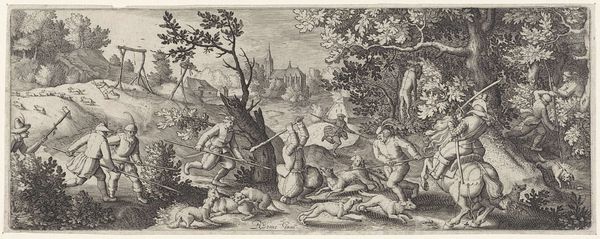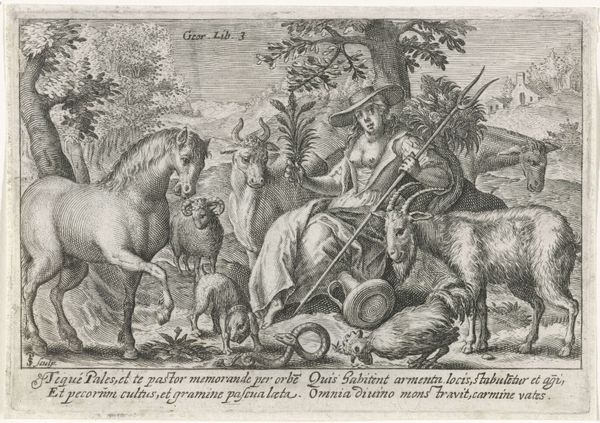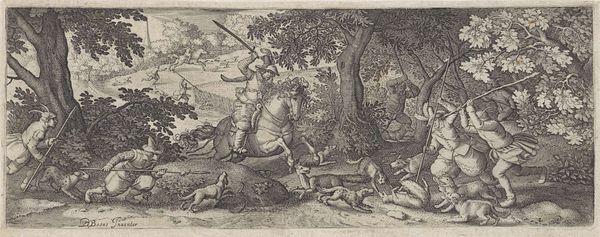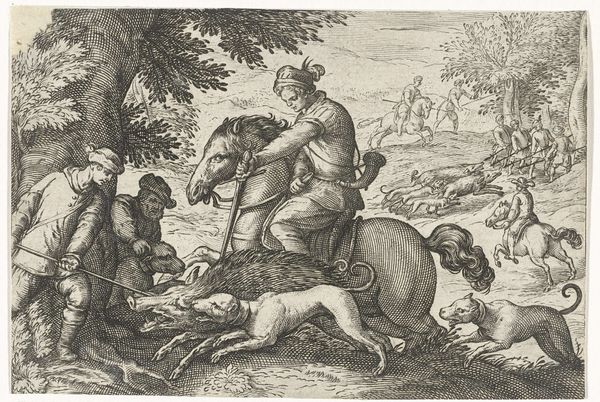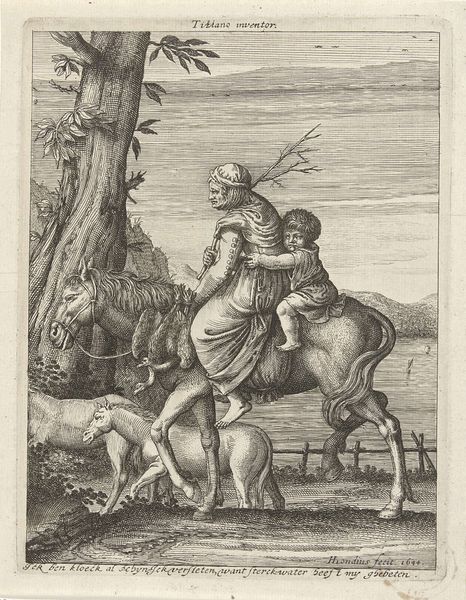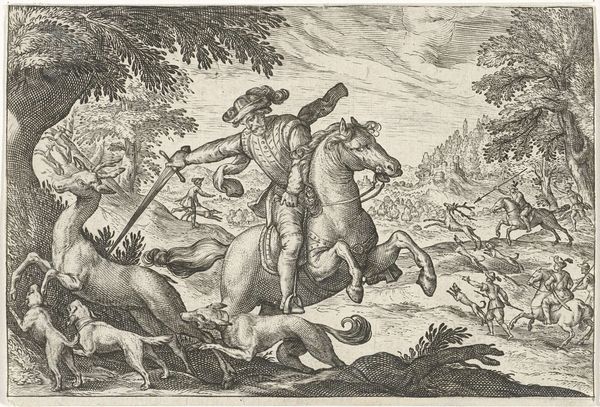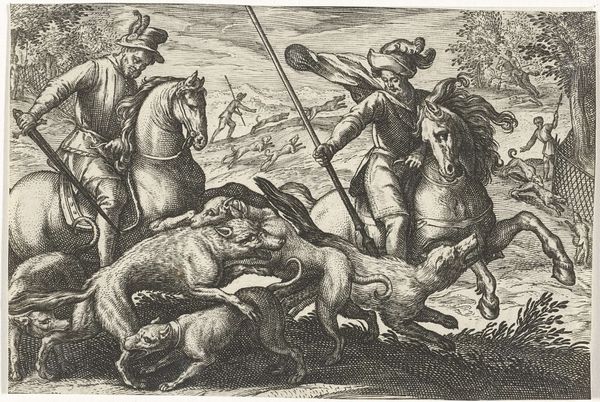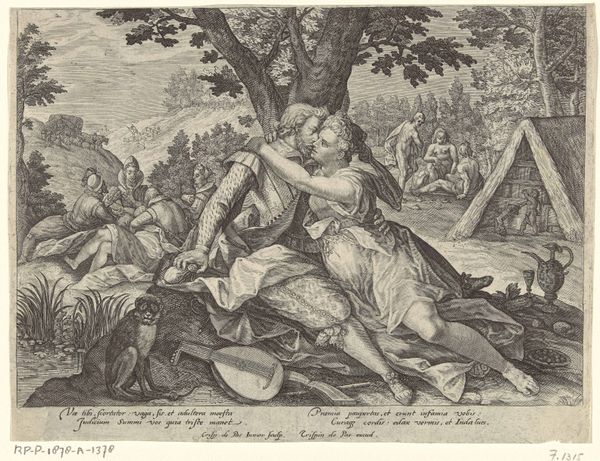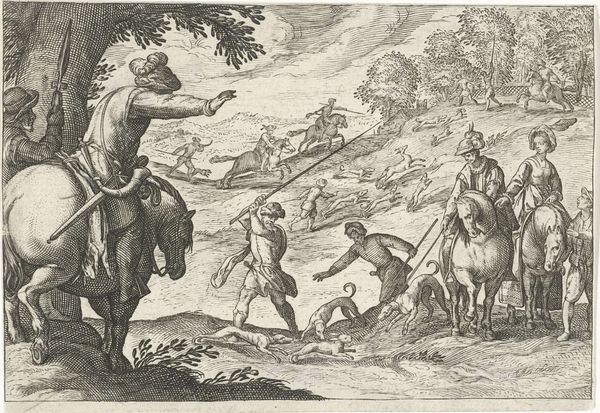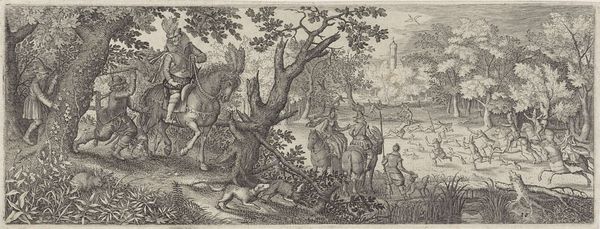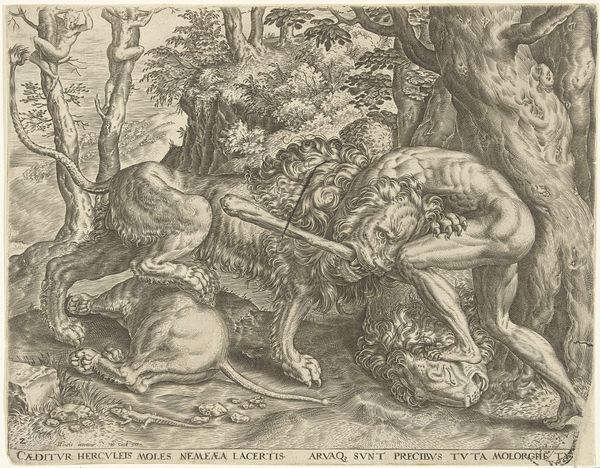
print, engraving
#
baroque
#
pen drawing
# print
#
landscape
#
figuration
#
genre-painting
#
engraving
Dimensions: height 103 mm, width 277 mm
Copyright: Rijks Museum: Open Domain
Curator: Here we have Pieter Serwouters's "Zwijnenjacht" from 1612, residing here at the Rijksmuseum. It is a genre painting, crafted as an engraving. What are your initial thoughts? Editor: A wild scene! My immediate impression is one of chaotic energy. The composition, rendered in monochrome, almost pulsates with movement, doesn’t it? The spears, the dogs, the boars – everything seems caught in a frenzied dance. Curator: It's certainly a dynamic composition. This print offers a fascinating glimpse into the aristocracy and the performance of status through hunting in the 17th century. Notice how Serwouters positions the hunters on horseback in the center, literally elevating them within the social hierarchy. Editor: The boar, of course, is a potent symbol here. The image is alluding to virility, and bravery and, of course, the mastery of the natural world. Think of the frequency of the Calydonian Boar hunt, or the Erymanthian Boar hunt stories from classical mythology. The print, by depicting such a chase, is invoking a whole network of classical meanings about skill, risk, and social status through mastery. Curator: Indeed. Boar hunting was a carefully choreographed event that asserted dominance but it was also about maintaining social order. Think about how control over resources, including wild game, translated to political power in the period. Prints like these circulated amongst a specific class of patrons, reaffirming those established roles. Editor: Absolutely, and beyond the purely symbolic is the image of transformation and tension inherent in the moment before and after such a chase, the life or death of it. The scene reminds us, even today, of our ancient drives, that are being expressed by what must have been some spectacular displays. Curator: Considering this as a print and therefore widely reproducible, what do you think its impact would have been at the time in conveying or shaping ideas about social order and identity? Editor: As a relatively accessible medium compared to, say, a large oil painting, engravings democratized access to certain images and ideas, although probably only for middle classes and up. The print can act as a token of an elite identity trickling down, and perhaps giving rise to shared symbolic understanding and cultural aspirations across society. Curator: That's a compelling perspective. "Zwijnenjacht" serves as a valuable testament to the dynamics of power and representation within a particular historical context. Editor: It certainly gave me much to think about – a window into the world of symbolic displays that shaped cultures and continues to do so in other, modernized forms.
Comments
No comments
Be the first to comment and join the conversation on the ultimate creative platform.
